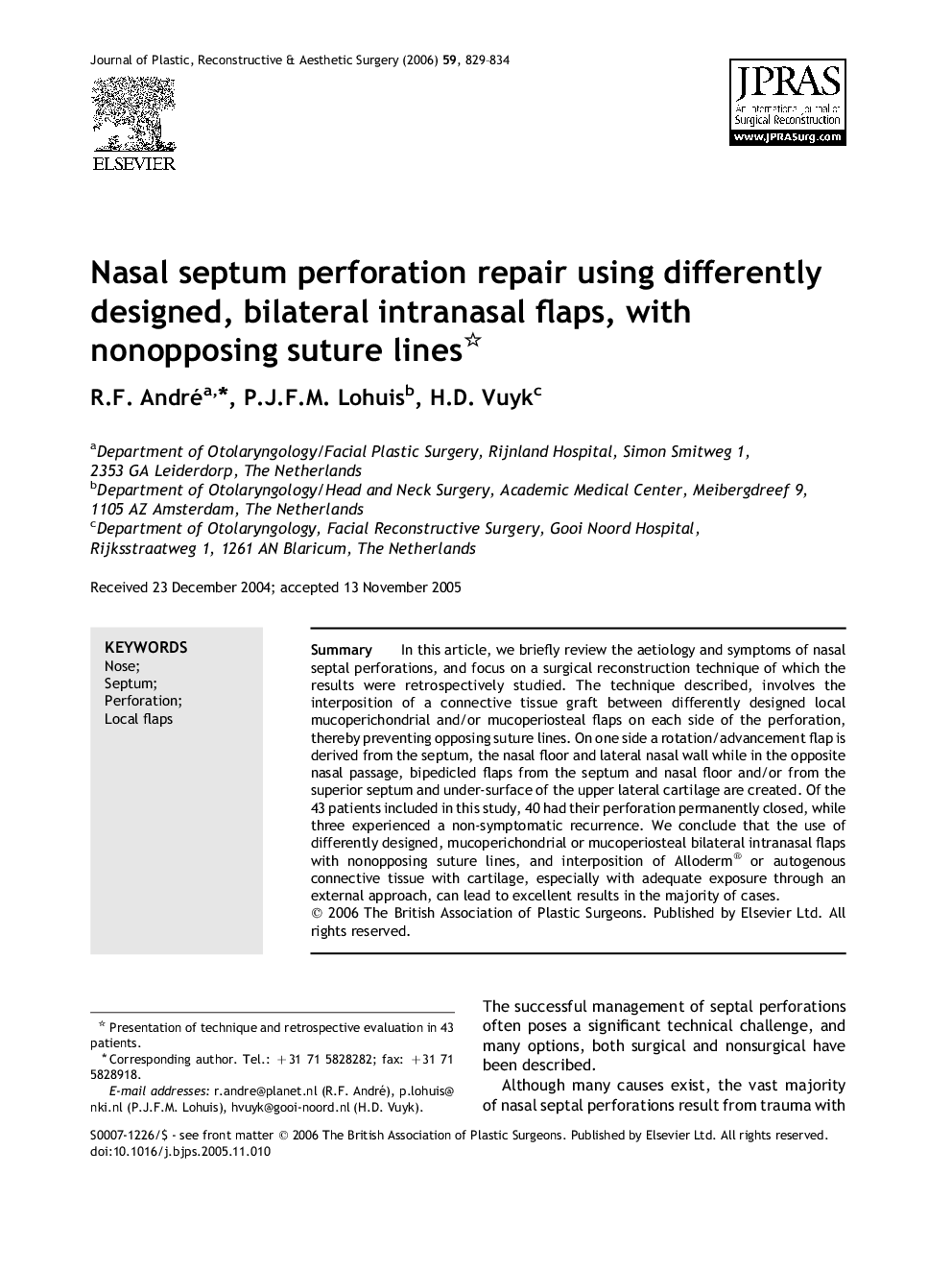| Article ID | Journal | Published Year | Pages | File Type |
|---|---|---|---|---|
| 4121912 | Journal of Plastic, Reconstructive & Aesthetic Surgery | 2006 | 6 Pages |
SummaryIn this article, we briefly review the aetiology and symptoms of nasal septal perforations, and focus on a surgical reconstruction technique of which the results were retrospectively studied. The technique described, involves the interposition of a connective tissue graft between differently designed local mucoperichondrial and/or mucoperiosteal flaps on each side of the perforation, thereby preventing opposing suture lines. On one side a rotation/advancement flap is derived from the septum, the nasal floor and lateral nasal wall while in the opposite nasal passage, bipedicled flaps from the septum and nasal floor and/or from the superior septum and under-surface of the upper lateral cartilage are created. Of the 43 patients included in this study, 40 had their perforation permanently closed, while three experienced a non-symptomatic recurrence. We conclude that the use of differently designed, mucoperichondrial or mucoperiosteal bilateral intranasal flaps with nonopposing suture lines, and interposition of Alloderm® or autogenous connective tissue with cartilage, especially with adequate exposure through an external approach, can lead to excellent results in the majority of cases.
